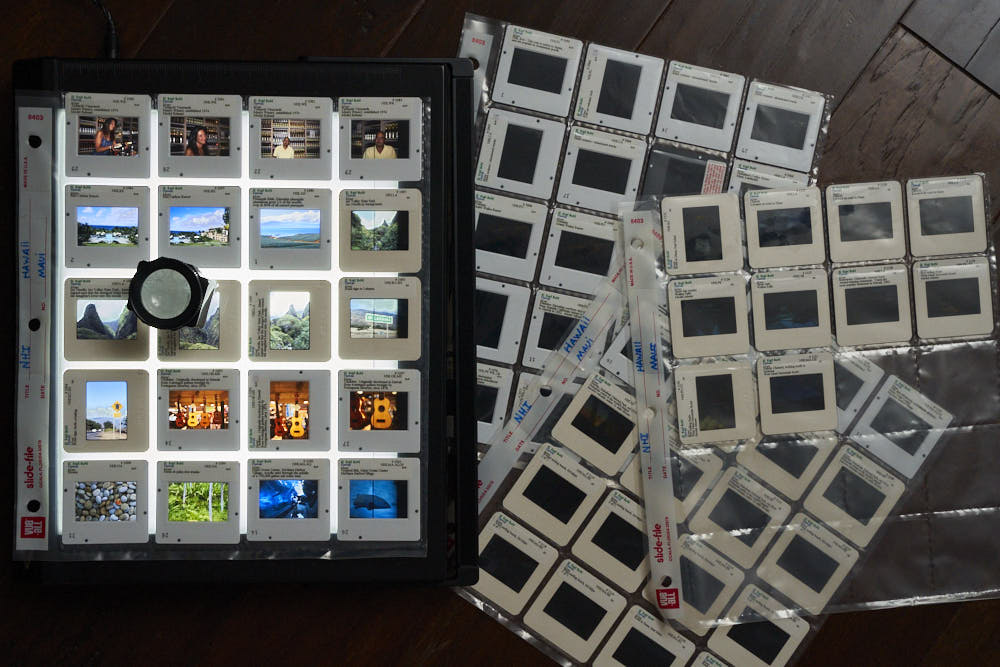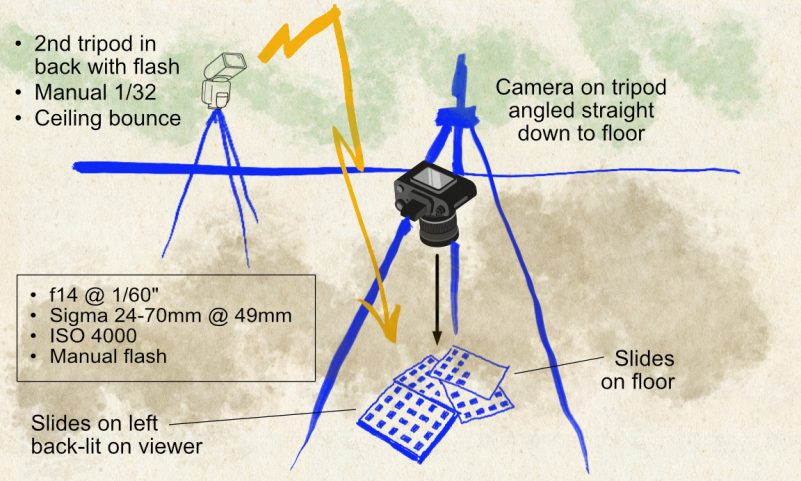Adventures of a Sage—Photography as a Lens for Self-Discovery
Tag: Photo Philosophy
Standing in Front of Interesting Stuff
National Geographic photographer Jim Richardson says this about becoming a better photographer: “If you want to be a better photographer, stand in front of more interesting stuff.”
If interesting stuff is the crux of improving your photography, my question is: given your time and budget, “how much interesting stuff can you afford to stand in front of?”
I follow several globetrotting adventure photographers on the net. Their destinations showcase the “What’s What” of global exotica: Katmandu last month to shoot Tibetan Monks at the Bodhnath Temple. Iceland this week for a series of landscapes at Thingvellir National Park. Buenos Aires next month for a session of portraits titled “Legends of the Gaucho.”
Who are these people?
After studying the genre, I concluded that most of these global photo-adventurers are young, in their twenties (and some of them not so young). Are these professional photographers earning a living with their adventure photos? Or are they adventurers looking for the meaning of life through a lens? Or are they a combination of both? What do these questions have to do with your photography quest?
These are questions worth exploring. However, when looking at motivation, we need to separate the pros vs. the amateurs. (I prefer ‘hobbyist.’)
Once someone crosses over into becoming ‘a professional’ the dynamics of cranking it out and economics of earning a living overcome the magical infatuation of photography for fun, exploration, or creative investigation. Infinite possibilities get trapped in Schrodinger’s cat box of alternate reality.
Becoming a pro changes your mindset. If you are a true pro, it probably even changes your DNA. As a hobbyist, you have the luxury of daydreaming and constant exploration. Anything is possible. La Dee Da. As a professional, when you wake up in the morning, you’re primarily thinking about photography to pay the rent. What can I shoot today? The hunting analogy is real. That pro vs. hobbyist dichotomy—a division into two mutually exclusive parts—is stark.
The median income of a photographer in 2019 was about $36,000—not exactly a budget for globetrotting. The highest 10% of professional photographers earned $79,435. Better, but difficult to achieve.
If, after decades of practice, you can make it into the National Geo staff photographer club, the holy grail of photography positions, you earn about $100,000 annually.
Before you get any wild ideas, however, realize that most National Geo photographers, are freelancers paid $400-$500 per diem. $450 per diem for a 2-week shoot equates to $6,300. If you can pull that off four times a year you earn about $25,000. Account for the fact that you are often between projects, and therefore not receiving an income during the down-time. Subtract equipment, transportation, insurance, taxes, and living expenses. And then, she-who-is-your-wife announces that your mother-in-law needs a root canal and guess who is paying for it. Photo freelancing is not for the faint of heart.
There is a third path, the one I have chosen, that of being a semi-professional. Being a semi-professional enables me to buy all the expensive gear of a real, genuine, professional photographer, without any of the income to pay for it. And my college counselor said I wasn’t smart!
What Motivates You as a Photographer?
You can’t begin to think about ‘what to shoot’ until you understand ‘why you shoot, which touches on my theme of photography as a lens for self-discovery. I suggest you write down three to five reasons that motivate your photography habit, and then ponder those to understand what inspires you to pick up the camera.
- Is it a creative outlet? What does that really mean?
- Is it fun? Why is it fun?
- Do you find it insightful? What is it about shooting that gives you insights into others, the world, and yourself?
What is Your Style?
Another question to answer before deciding what to shoot is to understand your ‘style.’ Understanding your style isn’t so much a conscious decision as a subconscious revelation. Because photography is a window to your soul, you are what you shoot. That revelation is only revealed after accumulating several thousand images. Only after accumulating a sizeable body of thoughtful work can you begin to contemplate what compels you to press the shutter. You need an adequate number of data points.
It goes without saying that, in order to accumulate a thoughtful body of work, you need to first transition away from snapshots. Snapshots are how most people capture images on their phone (or possibly camera).
How to shoot snapshots: When you see something not even mildly interesting, open photo app on your phone wherever you happen to be standing. Be sure not to consider composition and, most importantly, don’t move! Now tap the big round white circle. Hear that artificial shutter click? Image taken—capturing everything extraneous in front of, in back of, and around the edges of your subject: telephone poles, various body parts of strangers in motion, and that woman with the pink sweatshirt “I love cats.”
Extraneous stuff in the image is such an important subject that I intend to write a separate journal entry about it in the future. Even the pros make this mistake, and I have several entertaining examples. (If you have examples to share, please send to: sage@buhlphoto.com.)
Back on topic: You won’t learn many insights about yourself in snap shot mode.
By the way, selfies do not qualify as “a thoughtful body of work.”
Neither does building a list of ‘see me, I’m here, you’re not’ images for your Instagram profile. I call these “snapgots.” Got this one. On to the next.
I know what you’re thinking. “What a snob!” OK, if ‘snaps’ are where you’re at, that’s fine. You just won’t learn anything. You will definitely be a much happier person Amazoning for selfie-sticks than reading this journal.
Back to understanding style. This is a question that engrossed me for some time and took me down a ‘Zen and the Art of Motorcycle Maintenance’ rabbit hole that became somewhat consuming: What is a photography style? What is my shooting style? How can the universe be infinite? Where was Gilligan’s Island, anyway? Why hadn’t anyone discovered it prior to the SS Minnow running aground there? And how could Ginger have packed so many dresses? Here are the dark corners of human psyche to which such deep questions can lead.
To save you from a similar spiral into several months of photo-psychosis, take comfort that my answer became self-evident—and so will yours: When you have accumulated a sizeable body of thoughtful, considered work, dedicate quiet time to examine, study, and ponder your entire library.
- What do you see?
- What do you feel?
- What is your message?
- What are your preferred subjects, compositions, and colors?
- Are there consistent patterns that emerge that you weren’t previously aware of?
- What does your shooting style tell you about yourself?
- Would you like to shoot differently in the future than you have in the past?
- Most importantly, could you save money on your mother-in-law’s root canal with a lawn chair and a pair of needle nose pliers? (Be sure to shut the garage door.)
Except for that last question, you have a path to discover your style.
Reviewing Images in the Analog World

How Do You Define Your Style?
If you have discovered a style that spans your work, and you are happy and satisfied with your discovery, how would you describe your style? Write several descriptive phrases and pick one that works best. For example, I think my style phrase is: “colorful, inquisitive images of the world.”
Now you have articulated your style in a way that can guide your future images.
To maintain and build upon your style, remain consistent and true to yourself. Keep your style-phrase in mind whenever you shoot new subjects.
- Or, maybe not. Possibly you discover that you have 1,000 snapshots. Time to transition from snapshotter or snapgotter to a considered photographer.
- Or, possibly you don’t like what you’ve discovered. But what does that reveal about your inner self? What kind of changes do you want to make?
- Or, possibly you just want to explore new and different directions.
All of these are valid realizations. The point is: Shoot mindfully and understand what your photographs reveal about who you are.
Thank you for spending some time with me today. I would write more, but I’m off to shoot. I can’t afford to shoot “Legends of the Gaucho” in Buenos Airies, so I’m off to shoot ‘Legends of Groucho’—a Groucho Marx look-alike contest in Vegas.
I look forward to your comments. You can add them below.
Feel free to share Adventures of a Sage—Photography as a Lens for Self-Discovery with anyone you know who may be interested.
Challenges
- Write down 3-5 motivations for you as a photographer.
- Dedicate uninterrupted quiet time to review your photographs to contemplate and define your style.
- How do you define your style in a written statement?
- What does this reveal about your inner self?
Up Next
0003 What to Shoot—Finding Subject Material
Shot Talk
How I staged the ‘Reviewing Images’ shot


Leave A Comment